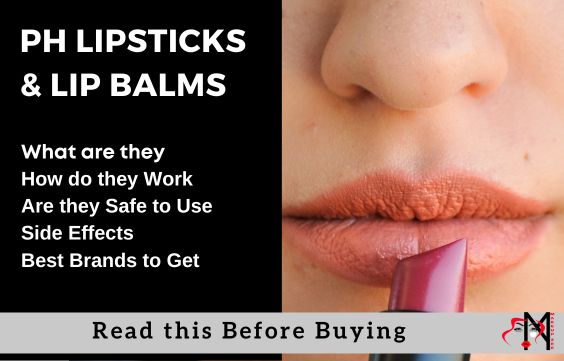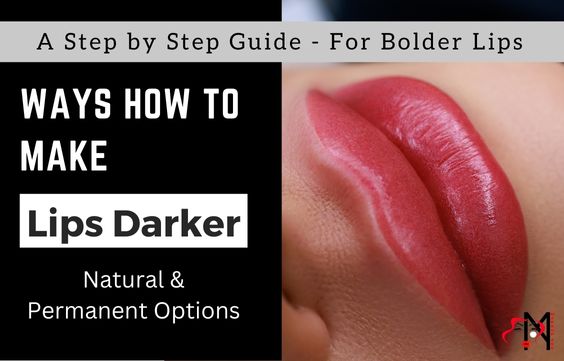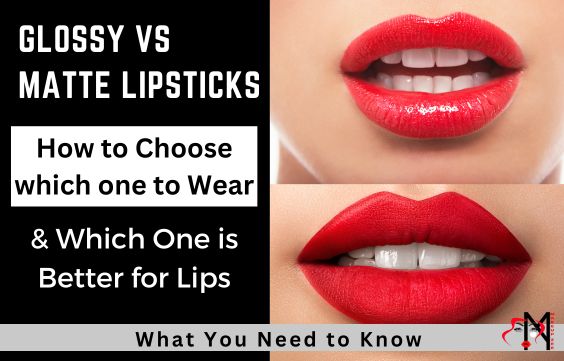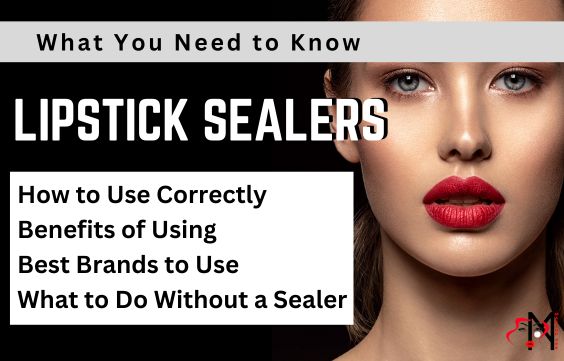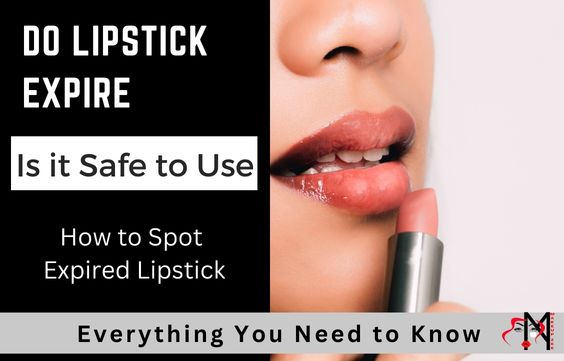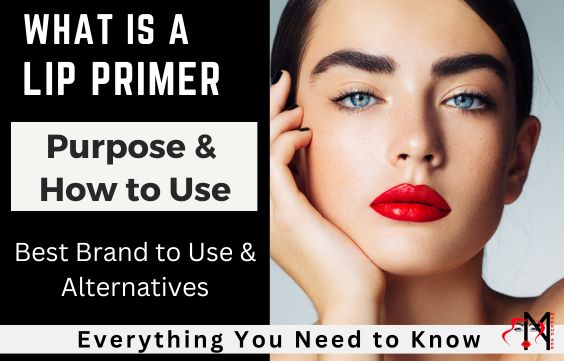Lipstick Allergies: How to Spot and Treat
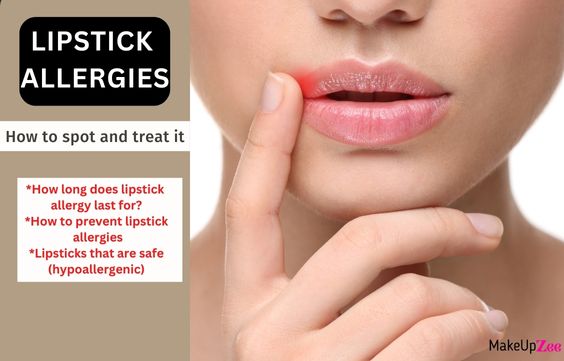
Lipsticks have to power to transform your face and is among the most popular cosmetic worn today.
However, if you are experiencing irritation or discomfort on your lips, it may be because of an allergy to your lipstick.
Now, this article will focus on highlighting the different symptoms that you can experience from a lipstick allergy and how to treat them. We will also offer our best recommendations for lipsticks that are hypoallergenic.
Can Lipstick cause an Allergic Reaction
While most lipsticks are generally safe to be applied to the lips, you can still have an allergic reaction, if you are allergic to one of the ingredients in them.
If you have any allergy symptoms, don’t dismiss your lipsticks as being the potential culprit, the quicker you discover the cause for the irritation, the less exposure to the irritant you will have and less potential damage to the lips.
It is also important to note that lipsticks are made from a variety of ingredients including many chemicals but, the FDA doesn’t regulate the cosmetics industry very closely. Hence, it’s up to each of us to know how lipsticks may affect us. Since on average, women consume seven pounds of fatty lipstick in their lifetimes.
Did you know that your lipstick may be the cause of your hyperpigmentation or darkness on your lips. To find out information more click this link Does Lipstick Darken Lips & Can it be Bad for Your Lips
Lipstick Allergy Symptoms – What to look for
Potential symptoms of a lipstick allergy are:
- Dryness
- Pigmentation
- Scaling or fissuring
- Crusting at the corners of the mouth, or angular cheilitis
- Burning
- Itching
- Swelling
- Tingling sensation
- Pain and discomfort
- Anaphylaxis
It is often difficult to predict the exact symptoms a person would experience as a result of lipstick allergies since symptoms are different for every person and can range from a simple rash to a fully-fledged allergic reaction.
When you are allergic to a lipstick, you may experience a condition called Allergic contact cheilitis (ACC). This is an allergic contact dermatitis (ACD) that affects the lips. People may also use the term “lipstick cheilitis” to refer to ACC because one of the main causes of ACC is an allergy to an ingredient in lipstick.
A person may experience symptoms of ACC on one or both lips and typically symptoms appear similar to eczema on or around the mouth. Citation.
While most people experience mild symptoms- others who have severe allergies can have a potentially life-threatening symptom called, anaphylaxis, a severe and potentially fatal allergic reaction.
Related Articles:
Natural & Permanent Ways How to Darken Lips
How to Use Food Coloring as a Natural DIY Lip Stain
1. Dryness
If your normally well-moisturized lips suddenly develop dryness, after using lipstick, you may have an allergy to one of its ingredients. Experts say that Carmine, a red pigment found in lipstick may trigger an allergic reaction.
Related Article – Do Lipstick Expire & Is it Safe to use – Possible Dangers
2. Pigmentation
A rash may develop on the skin of the lips, leading to a change in the normal lips. On fair skin, a person may notice redness while on dark skin, a person may notice the skin turning dark brown, purple, or reddish. These rashes may have small boils or bumps on the lips.
Related Article – Solid vs Liquid Lipstick- Which Looks Better & Last Longer
3. Scaling or fissuring
The area usually most affected by these symptoms is the skin surrounding the mouth and where the inner red part of the mouth meets the skin. The fissures are usually small tears or cracks in the lips that may or may not bleed.
Related Articles –
7 Tips on How to Keep Lipstick & Gloss on While Eating
Lipstick with SPF – What You Need to Know
4. Crusting at the corners of the mouth, or angular cheilitis
Angular cheilitis is a common skin condition affecting the corners of your mouth. It leads to painful, cracked sores.
5. Burning
Another allergy symptom is lips may feel hot or have a burning sensation after applying the lipstick.
Related Article – Best Lipstick Sealers- Benefits, How to Use & Alternatives
6. Itching
After applying a lipstick that you have an allergy to you may experience itchy lips that get progressively worse. The lips may be so itchy that you may be tempted to scratch or irritate them. Avoid doing this as it can lead to scaring of the lips.
7. Swelling
Like other allergies, swelling of the lips along with redness is also a symptom of an allergy to lipstick.
8. Tingling sensation
This is usually the first sign that women notice when they think they may have an allergic reaction to a specific lipstick. If your lipstick does not have plumping ingredients, then the tingling as a result of a slight allergic reaction.
The reason why you may not be allergic to all lipsticks that cause a tingling sensation on your lips is because some lipsticks use capsaicin or peppermint, as lip plumping ingredients. These ingredients cause a burning sensation to just lightly irritate the skin on your lips, for a plumping effect.
To learn more about Lip Plumping click here to read more.
9. Pain and discomfort
After applying your lipstick, you may feel some pain or discomfort on the lips. If any signs of irritation occurs discontinue lipstick use.
Related Article – Matte Vs Glossy Lipstick- Which is Better & How to Choose
10. Anaphylaxis
This is a very rare severe symptom of an allergy to a lipstick.
Serious allergic reactions can be in the form of an acute allergic reaction, called anaphylaxis. When anaphylaxis is severe, a person can have anaphylactic shock.
This reaction can be dangerous and, according to the American Academy of Allergy, Asthma, and Immunology (AAAAI), even fatal. Some people may not even realize they have an allergy to something until they experience anaphylaxis.
Signs of anaphylaxis, are:
- dizziness
- fainting
- low blood pressure
- breaths short and fast
- wheezing
- fast heartbeat
- sweating profusely
- swelling of the tongue and throat
- vomiting
- diarrhea
How Long Does a Lipstick Allergy Last
A person can begin experiencing a reaction immediately after lipstick application or within 72 hours. The symptoms last 2 -10 days depending on the severity of the allergy.
The exact period in which a lipstick allergy lasts varies from person to person. Typically, a lipstick allergy is temporary and will resolve quickly after a person begins avoiding the allergen that caused the reaction.
Video showing How you treat a Lipstick Allergy
Steps How to Treat a Lipstick Allergy
Immediately, after having any symptoms of an allergy to a lipstick, follow these steps:
1. Carefully remove Lipstick after a lipstick allergy
- After noticing any signs of irritation, quickly remove the lipstick from your lips with a wet cloth or makeup wipe.
- Try to prevent it from smudging outside the lip lines.
- To ensure that all traces of the lipstick has been thoroughly removed wash your lips and face with water.
2. Avoid Exposing Your Lips to Irritants
- Allow your lips to heal properly before attempting to wear lipsticks or lip color again.
- And avoid lip products until you figure out the ingredient that you are allergic to.
- Avoid skin irritants like harsh toothpaste, mouthwashes, and spicy foods.
- Avoid licking the lips. Saliva will damage the protective layer of the lips so that the lips are prone to inflammation.
- Staying out of the sun and extreme cold or wind may dry lips and worsen symptoms.
3. Use ointments and remedies to heal lips faster after suffering from a lipstick allergy
- Use a Corticosteroid such as hydrocortisone Make sure you don’t use it for more than a week without a doctor’s supervision.
- Take antihistamines like Benadryl to help with the reaction. If severe enough, keep an Epi-Pen nearby or go to the emergency room.
- Apply ice or a cool compress to the corners of your mouth to soothe chapped lips.
- Using lip balms to keep the lips and corners of your mouth moisturized. You can choose the following moisturizing ingredients that do not trigger allergies, such as:
- petroleum jelly,
- mineral oils,
- dimethicone,
- titanium oxide of zinc oxide,
- ceramide, and
- linseed oil.
4. Identify the Allergen
How to spot the allergen in a Lipstick
You will have to do an allergy test to try to eliminate lipsticks that may contain potential allergens.
See a doctor immediately if you have:
- Any signs of anaphylaxis including difficulty breathing.
- Intense sneezing, itchy skin, or more severely, wheezing, hives
- Nausea, stomach pain
How to Prevent Lipstick Allergies
The best way to prevent a lipstick allergy is to stay away from lipsticks that have many ingredients that can be harmful, especially to persons with sensitive skin.
Try to stick to lipsticks that are made from natural ingredients or are hypoallergenic and stay away from ingredients that are common allergy triggers.
Some ingredients that are found in lipsticks that may trigger an allergic reaction include:
- People can be allergic to emollients found in lipstick like lanolin, almond oil, castor oil, etc. In fact, the most common allergen in lipstick is lanolin. Lanolin is a type of oil that is derived from sheep wool.
- Another common allergen found in lipstick is propylene glycol. Propylene glycol is a type of alcohol that is used as a humectant or moisture-binding agent.
- Fragrances are another source of allergens. Some of these include peppermint oil, and vanilla.
- Flavorings including cinnamon, Capsaicin
- Dyes including carmine, zinc oxide, coal tar
- Parabens/Preservatives namely propyl gallate
- Beeswax produced naturally by honeybees, is an increasingly common ingredient, though it has been known to cause allergic reactions in some people.
- Tocopheryl Acetate (AKA vitamin E acetate) is a natural antioxidant that can be isolated from vegetable oil and used to moisturize the skin.
- Retinyl Palmitate/ Vitamin A
- Heavy Metals
Once you have discovered that you have an allergy to an ingredient in lipstick, you have to allow your lips to heal and try to rule out ingredients one by one to stop another potential allergy attack.
Safe Hypoallergenic Lipstick
1- Almay Lipstick with Vitamin E Oil & Shea Butter
Almay’s hypoallergenic lipsticks come in matte as well as cream finishes and are formulated with vitamins E and C and Shea Butter.
They are available in 24 shades and are Hypoallergenic as well as Fragrance-free. You can click here to check them out on Amazon.
2- Honest Beauty Tinted Lip Balm
The Honest Beauty Tinted Lip Balm has a formula that is EWG Certified plus Dermatologist & Physician tested Vegan plus Cruelty.
It does not contain any Petrolatum, Paraffins, Parabens, Synthetic Fragrances, Silicones or Mineral Oil.
Honest Beauty lip balms come in 7 shades. You can click here to see them on Amazon.

